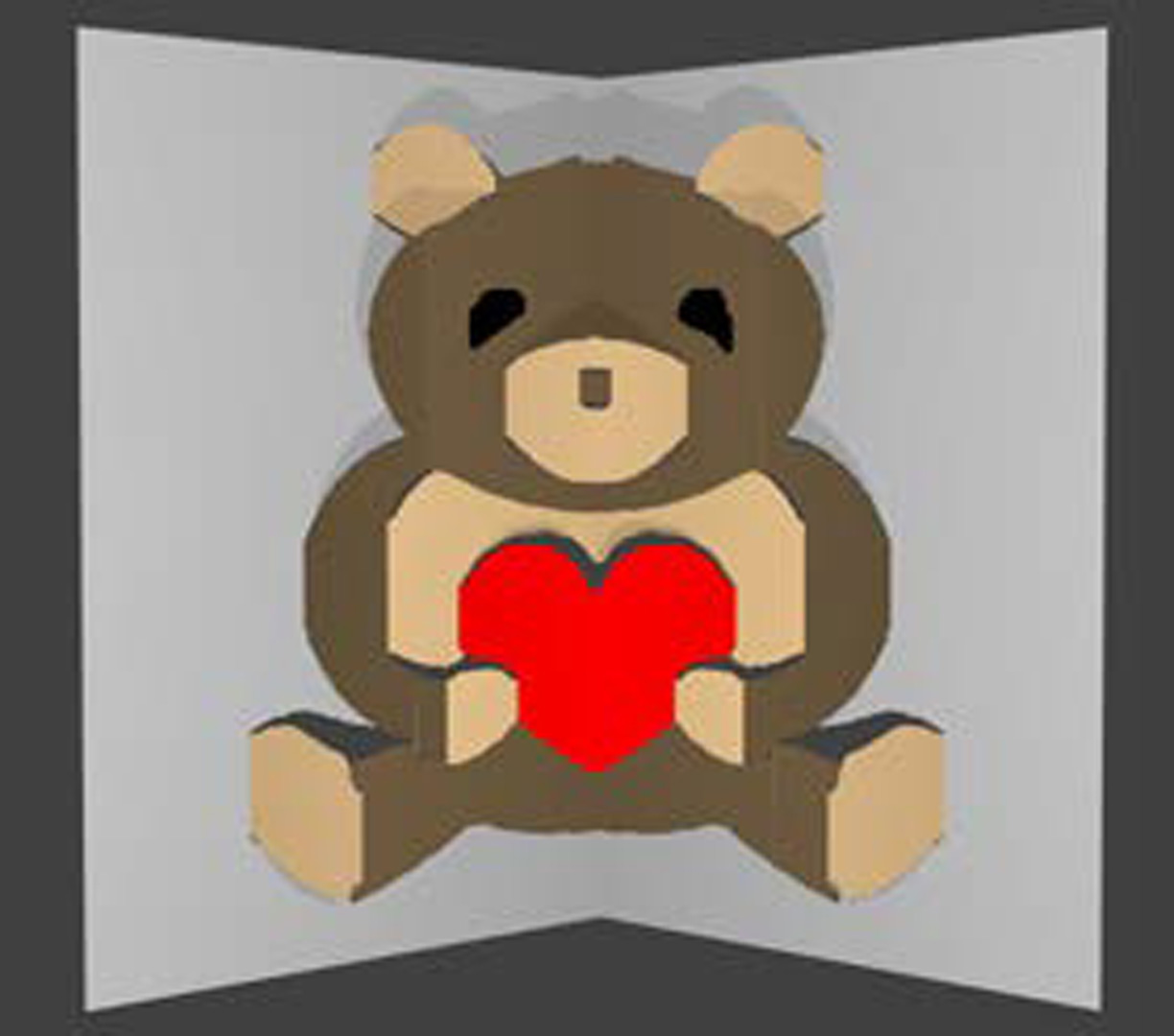“Image-based Paper Pop-up Design” by Liu, Yang, Lee and Chu
Conference:
Type(s):
Entry Number: 55
Title:
- Image-based Paper Pop-up Design
Presenter(s)/Author(s):
Abstract:
An Origamic Architecture (OA), originally introduced by Masahiro Chatani in 1980, is a design of cuts and folds on a single piece of paper. Interesting geometric structure “pops up” when the paper is opened. Attributing to such special and entertaining structure, OA is more and more popular and appears in many artistic forms such as greeting cards and desktop decorations. Due to rigid paper crafting constraints, the OA design process is often time consuming and requires considerable skills. Several computer-aided design tools have been developed to provide a virtual design environment and assist the design process (see [Mitani and Suzuki 2004] and the references therein). However, the ultimate placement of cuts and folds still depends on the user, posing the design process troublesome and highly skill-demanding. To further simplify OA design, Li et al. [2010] proposed a fully automatic algorithm to convert building models to paper architectures. Le et al. [2014] presented a surface-and-contour-preserving method to pop up 3D models with more freeform shapes.
Unlike previous work where OA designs approximate 3D models, we use 2D images as input and automatically generate OA designs from 2D shapes. The motivation behind this is two-fold. First, OA designs created by artists are often inspired by 2D sketches [AmazingPopup 2014]. Second, the reliance on 3D models limits the scope of the aforementioned methods, while our approach benefits from the high availability of image resources. The main challenge of our image-based OA design arises from inferring a physically realizable 3D structure from a 2D image. To address the problem, we first create patches by segmenting the input 2D shape. Paper cuts and folds are automatically generated and optimized to make the OA design physically realizable. Specifically, we initialize cuts and folds based on the geometric features of the entire 2D shape and individual patches (e.g., symmetry, connectivity, etc.). The number and location of cuts and folds are automatically calculated through a novel optimization process that guarantees the foldability and stability of the final design. We also provide an evaluation scheme to facilitate OA selection from multiple design suggestions.
References:
- AmazingPopup. 2014. http://www.amazingpopup.com.
- Le, S., Leow, S.-J., Le-Nguyen, T.-V., Ruiz, C., and Low, K.-L. 2014. Surface and contour-preserving origamic architecture paper popups. IEEE Trans. on Vis. and Comp. Graphics 20, 2, 276–288.
- Li, X.-Y., Shen, C.-H., Huang, S.-S., Ju, T., and Hu, S.-M. 2010. Popup: Automatic paper architectures from 3d models. ACM Trans. on Graphics 29, 4, 111:1–111:9.
- Mitani, J., and Suzuki, H. 2004. Computer aided design for origamic architecture models with polygonal representation. In Proc. of the CGI.




